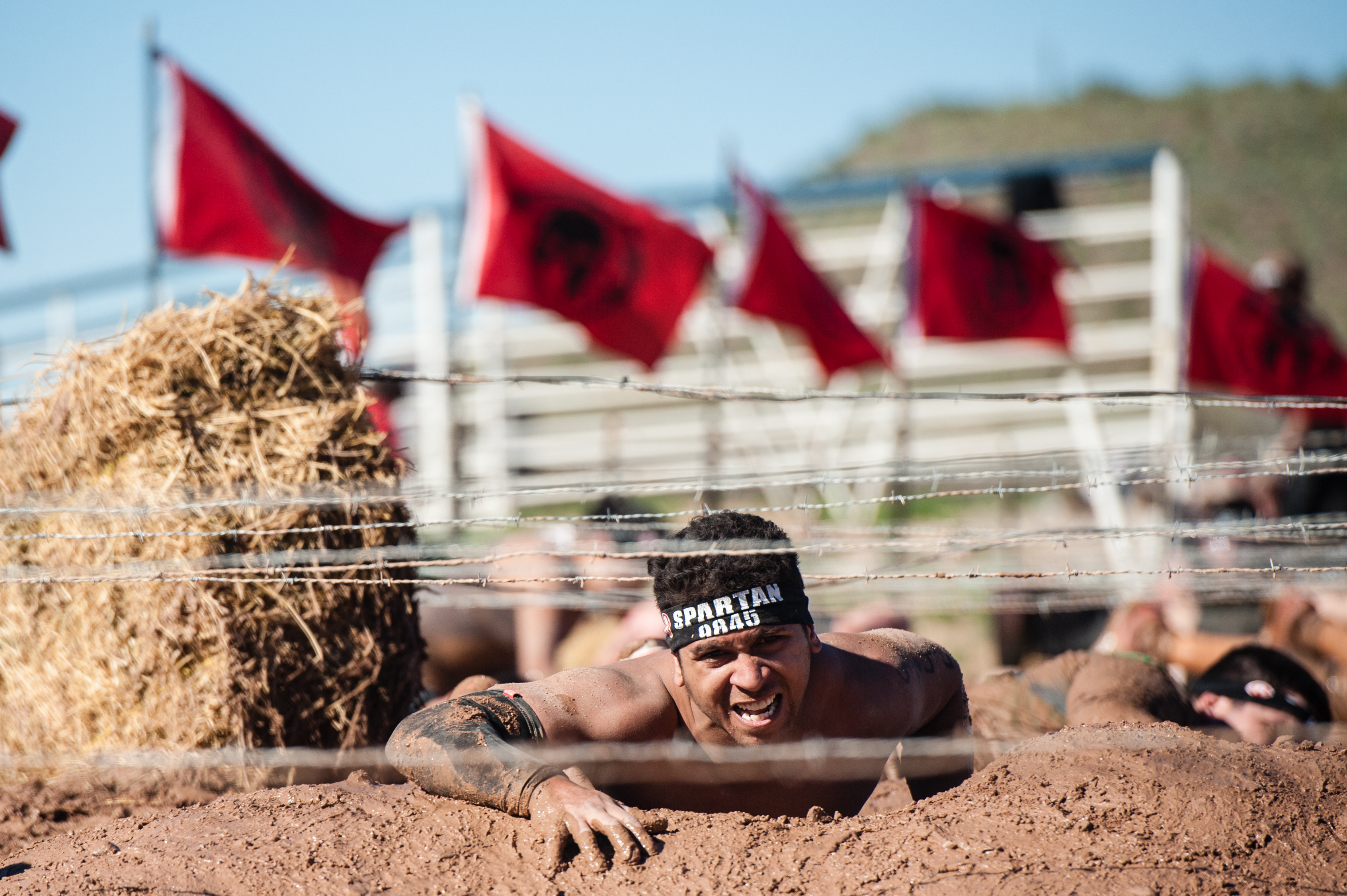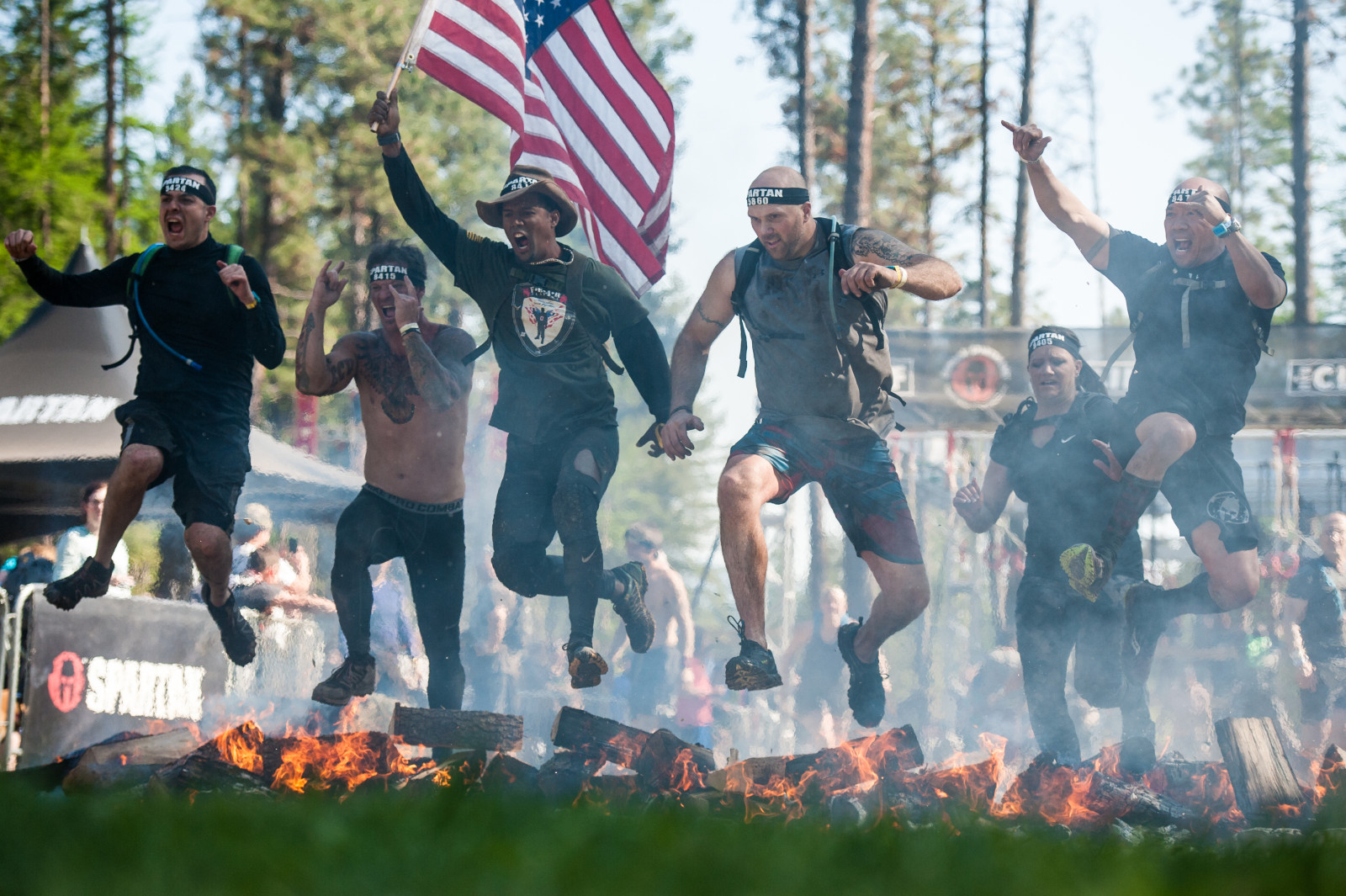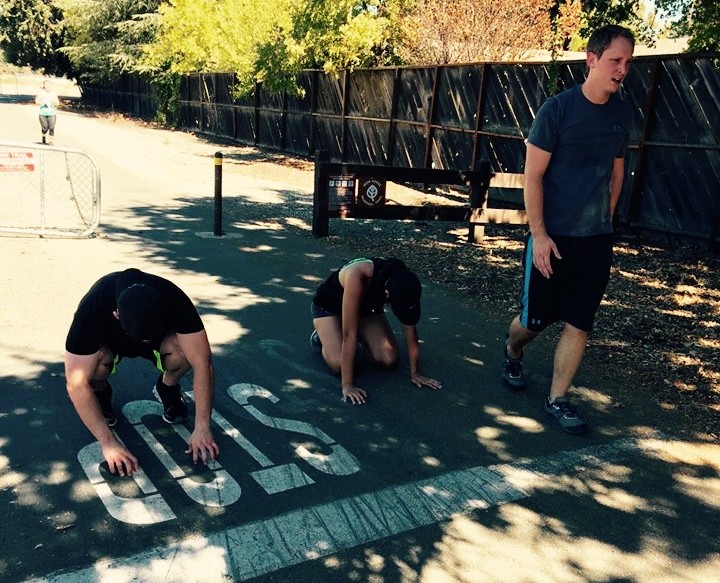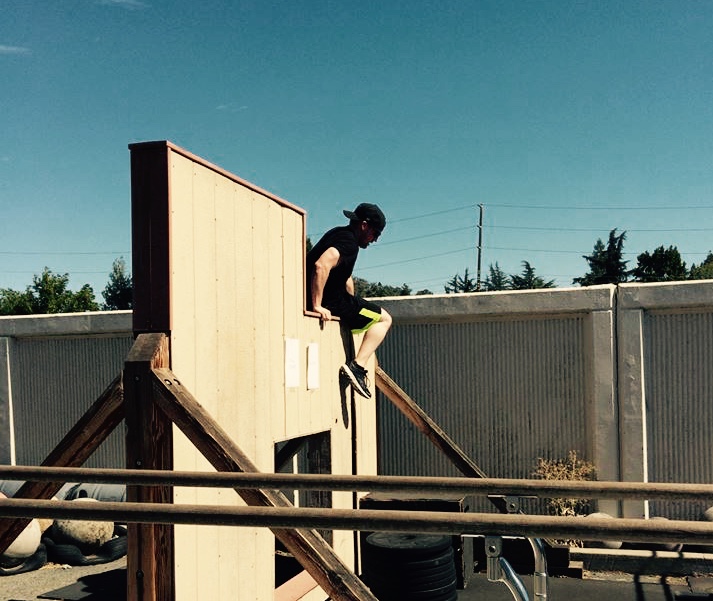
Becoming a Spartan
Are you looking for a new fitness challenge?
Recently, my CrossFit affiliate, Diablo CrossFit, held a six-week Spartan clinic for those of us interested in an upcoming obstacle race, or for those like me who wanted to try something new on a Saturday afternoon. This article is a recap of the experience, offering tips for you to train for your Spartan Races.
What Exactly is a Spartan Race?
A Spartan race is a part of increasingly popular obstacle-course race format that incorporates many functional style movements with running.
Over the past few years, obstacle challenges like Warrior Dash, Spartan Race or Tough Mudders have rapidly gained popularity among athletes and adventure-seekers.
These aren’t your Uncle Bob’s 5Ks and fun runs. They are a endurance tests that combine a variety of challenges ranging anywhere from military-style obstacles to something similar to an American Ninja Warrior course. These races can be solo-oriented (Spartan) or teamwork oriented (Tough Mudder).
The Spartan brand is also much more than races. Their website includes meal plans for athletes, tips, training programs, podcasts and more. For many people, Spartan is much more than an adventure race, but a lifestyle similar to CrossFit that they live year round.
Spartan Race Courses
Races range from a three to 5-mile Spartan Sprint all the way up to a 12 to 15 mile Spartan Beast. The official Spartan website encourages beginners to spend 12 months training for the bragging rights of being a “Spartan”. Participants first conquer the Sprint after three months and then the Super race when they’re six months in. At the end of the 12 months, they conquer the Spartan Beast, which is a grueling race with over 30 obstacles to conquer.
They now also offer different courses for veteran Spartans including the 60-hour Agoge challenge, held twice a year in Vermont and the Hurricane Heat, a team-based endurance race.
Although some people’s fitness routines are solely training for and competing in Spartan races, a lot of other athletes and beginners have something to gain from competing in an endurance-style race. Some of those people are like me — a CrossFitter or other functional fitness athlete looking for a challenge and some of them are athletes with a running background who enjoy incorporating functional fitness into their workout scheme. In fact, many people who enter these competitions are professional runners who bolster their superior running with CrossFit style movements.

These races tend to be a challenge for all types of athletes — novices and elite. Most CrossFitters I know can crush a heart-pumping metcon in seven to 14 minutes, but when you throw in a ton of running, things start to change. And even the most experienced runner is bound to come up against some difficult challenges during these brutal obstacles.
Although each race is a little different, Spartan runners can expect to see burpees on every course. Everything else is up in the air — races incorporate everything from crawling through barbed wire to throwing spears and climbing ropes. Some runners will find themselves jumping through fire, climbing walls or carrying heavy buckets of sand. Part of the appeal of these endurance-type races is that you never know what to expect.
Training for a Spartan Race
My coach, who has run a few of these races, designed the conditioning course to simulate a three to 5-mile Spartan Sprint, as most of us were beginners. We spent six weeks preparing to take on our first Spartan race.
Our basic six-week conditioning plan looked something like this:
Week 1: Test and establish a baseline.
Weeks 2-5: Condition with 3-4 metcon WODs each week and practice a designated run ranging from three to 10 kilometers.
Week 6: Re-test
Week 1: Test and establish a baseline.
Weeks 2-5: Condition with 3-4 metcon WODs each week and practice a designated run ranging from three to 10 kilometers.
Week 6: Re-test
The Journey
Week 1
I really wasn’t sure what I was getting myself into when I signed up for the Spartan Clinic. I have done long WODs before and this definitely had an “endurance” feel to it. Because of Diablo’s CrossFit schedule, the only time we could effectively test and not interrupt classes was in the early afternoon. The temperature for the test was in the low to mid-90s — this is California after all. Coach Riki designed the course to be completed in 75 minutes or less. He said we shouldn’t have a problem.
The course involved a series of movements like carrying objects while running and performing body weight exercises along the way. Pretty much the entire workout was comprised of movements familiar to most CrossFitters. However, the course included wall climbs and tire flips, which aren’t a normal part of Diablo’s WODs.
How did I do? 53:40. As hard as it was, I knew that if I prepared, I could do it faster the next time around. The worst part of the workout? No question: THE HEAT! It just made everything suck so much more.
 Weeks 2-5
Weeks 2-5
Each week Riki would send us an email with “homework.” We were to complete at least 3 metcons per week in addition to the homework run. Additional running was encouraged. If we couldn’t make the designated runs, then we were to run on our own schedule either at the specified location or a location with an equivalent distance.
For this type of workout, running is really key. Ditch your Nanos and put on some running shoes. Most Spartan races include hills, both up and down. Where we live, there is plenty of hilly terrain, so we were able to get plenty of practice. Each week the running courses got longer and more challenging. Riki didn’t try to mimic the test course, but rather encouraged strictly running with the homework. By week 5, we were assigned a 7-mile, or 10K run through the hills.
During this time, I found myself more focused on hydration as well as what I ate and when. Seven miles is a long way to go without proper gas in the tank!

Week 6
Somehow, I made it back to test day. Having spent the past month running, working on conditioning and focusing on eating and hydration, I came into it pretty confident that I could take five to ten minutes off my previous time.
Fall was in the air and if I learned anything during this clinic, it’s that it is a lot more pleasant to run when it was cool out rather than blazing hot. The morning started out overcast, but the temperatures soon rose into the high 80s at test time.
The course was identical. The goal was simple: do it faster than last time. The second time, everything seemed easier. Maybe it was the familiarity of the course, but I felt I was moving much more quickly (and noticed everyone else was as well). The kettle bell run, sandbags, dumbbell farmer’s carry all still presented a challenge, but the running at least was much easier.
So how did I do? I finished with a time of just over 48 minutes. For those of you who don’t math, I shaved 5 minutes off my previous time. More impressively, everyone else finished between 4 and 15 minutes faster than our initial attempt during week 1.
Tips for Training on Your Own
- Pick a target distance and plan a practice course. If you are preparing for a Spartan Beast, then your course should be long and extremely challenging. If it’s a shorter race, adjust your distance accordingly. Ask a coach or a Spartan competitor to give you some ideas for movements, preparation workouts, and course planning. It should involve running, climbing, body weight movements, and carrying a variety of weighted objects generous distances.
- Run and run often. Most CrossFitters I know don’t show up for a 2000-meter run test when its used in place of a WOD — we live to lift, not to die in cardio-heavy lung burners. However, after a few weeks of banging out 3-5K runs, 2000 meters will seem easy. Increase your distances each week. If you don’t run much, start with a mile and then increase it from there.
- Have a qualified coach critique your running technique. This is very important. We all run differently and if you want to avoid major problems like sore joints, shin splints, bone spurs and plantar fasciitis, have someone who is qualified watch your technique.
- Use the proper shoes. For early training, running shoes are fine. If you are serious about running one of these trail races, you should consider proper trail running shoes.
- If you can’t run, then hop on an Erg and row! Or better yet, do both! One of my favorite CrossFit Diablo workouts is called “Evasion.” The goal is simple: Cover as many meters as possible in 20 minutes (target is 4500K for women and 5000K for men). For the workout to be RX, you must run at least 800 meters. Any combination of rowing or running beyond that is allowed. First time I did this workout, I was around 4400+ meters. Two months later, I completed it again while training during the Spartan Clinic and posted a distance of 5043 meters!
- Hydrate daily. This means if you have a test day, run, or a Spartan race coming up, you should be consuming plenty of water in the 24-48 hours prior.
- Carbs, carbs, carbs. I know many eating dogmas suggest limiting your carbs, and for most CrossFit workouts its a great idea. However, when you include running extreme distances, your body burns through a lot more fuel. The trick isn’t just eating more carbs, but knowing when to eat them and eating good carbs. Take stock of your food intake and plan for your runs accordingly. Just a warning, loading up on doughnuts is probably not going to improve your run time, but incorporating healthy carbs like fruit and sweet potatoes will do your body good. Research and try different combinations so that you are properly prepared for the workout ahead.
- Stretch. Foot and leg stretches along with ankle mobility is incredibly important. Have one of your CrossFit coaches show you some of their favorites.
Remember, although training for and competing in a Spartan race may seem pretty intimidating — it should, it’s hard! — at the end of the day, it’s about challenging yourself and having fun!
What training tips do you have for competing in a Spartan Race? Let us know!


